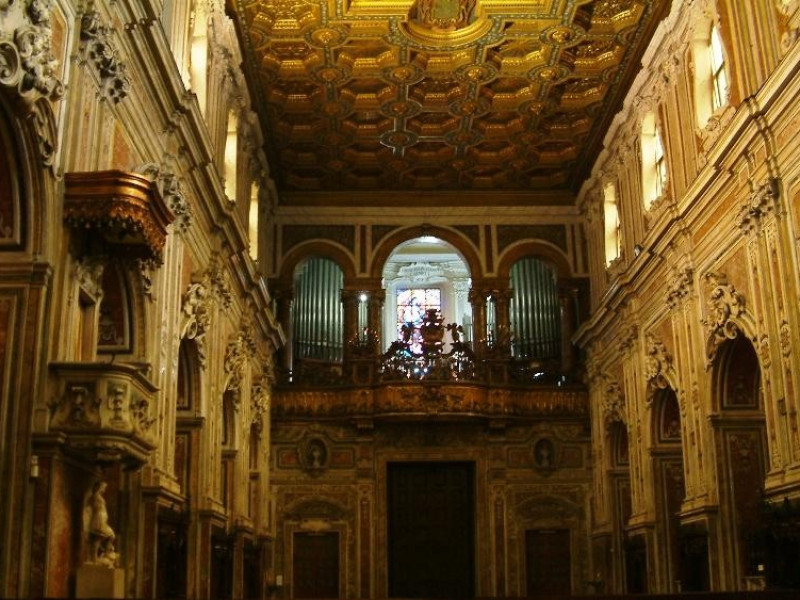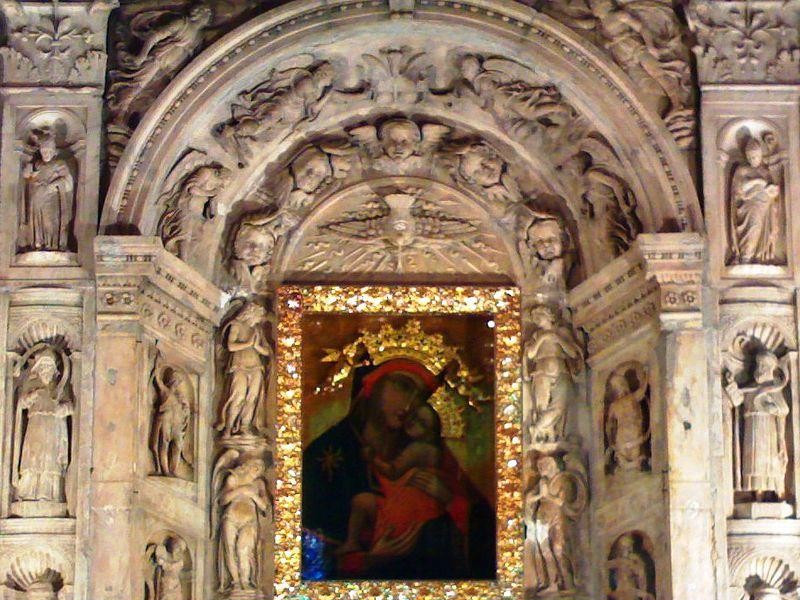Basilica Santuario di Santa Maria del Carmine Maggiore
The Basilica of Carmine Maggiore is one of the largest churches of Naples, a unique example of Baroque. Located in Carmine Square, is linked to the tradition that some monks, fleeing from Palestine, had brought an image of Our Lady of Mount Carmel and placed in a small chapel dedicated to St. Nicholas ("the Grotticella"). However, the first historical attestation of the Carmelites in Naples dates back to 1268, and the icon of "La Bruna" looks more like a work of the Tuscany thirteenth century. In '600, in connection with the work of repaving, were found the remains of Conrad of Swabia, who died in 1268 for capital execution punishment ordered by Charles of Anjou. Discovering followed the erection of a monument in his honor, made in the nineteenth century by Schopf. During World War II, the German soldiers tried unsuccessfully to steal the remains of Conrad, not having understood that were inside the pedestal of the statue. The Basilica is also linked to the so-called "Miracle of the Crucifix", which saw the head of the wooden Christ reclined to dodge the Aragonese against the Anjou: the crucifix of the miracle is the object of devotion every December 26, and during the Lent. The same figure of Masaniello, the protagonist of the Neapolitan revolt of July 1647 against the viceroyalty of Spain, is linked to this Basilica, where he died the day of the feast of Our Lady of Mount Carmel. The present facade dates back to 1766 and is a work of Giovanni del Gaizo; the bell tower has five bells. The interior, rich in polychrome marble, is characterized by a wide nave flanked by chapels and a coffered ceiling; on the portal is placed a monumental organ. The Cloister, contemporary to the construction of the Church is richly frescoed with lives of Saints Elijah and Elisha; presents a once in Pompeian style and a checkered marble floor of Caserta, houses an arabesque clock tower and a sundial. At the center of the garden is placed a marble fountain of the XVI century with two water lilies.



